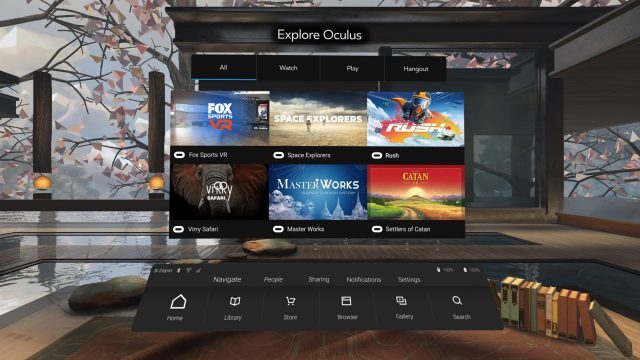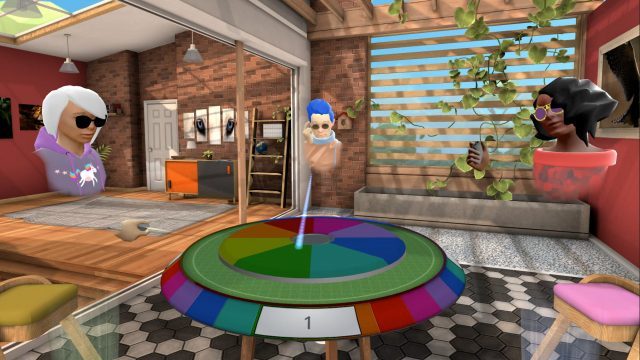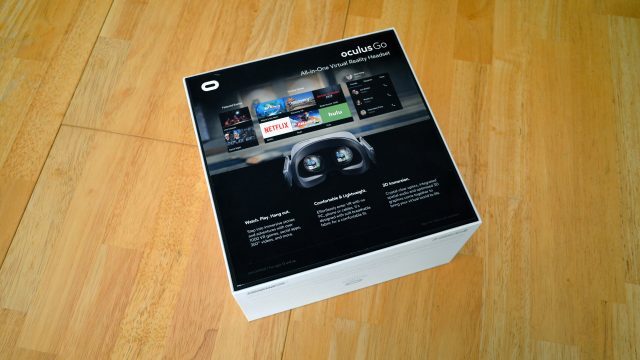Setup and Companion App
Along with the launch of Go, Oculus is launching a companion app for the headset for both Android and iOS phones. It works quite similarly to the Gear VR app, and allows you to browse the content library and click a button to install apps on your headset. It can also send you system-level notifications (ie: a new app is finished installing), and app-level notifications too (ie: there’s new DLC available). The app can also be used to allow photos from your phone to be viewed on the headset.
Setting up the headset is straightforward: the headset is detected in the companion app via Bluetooth, and then you’ll pick a Wi-Fi network to connect it to. The whole process takes a few minutes, and then you can put on your headset and start exploring.
Content

After years of Gear VR on the market, Oculus’ mobile store boasts “more than 1,000 apps,” but good apps are few and far between. Many apps are poorly optimized and often look worse than the kind of graphics one would expect from a simple mobile phone game in 2018. Despite the improvements made to the hardware, the Go’s impressive visual clarity is all for naught in many applications which can’t manage even a minimally acceptable level of anti-aliasing.

There are a handful of standouts, but you really have to work to find them—the default ‘Explore’ feed seems to constantly want to hock random 360 videos at you, and unless you have a speedy connection, they’ll stream in potato quality so bad that it’s likely to turn many people off of 360 videos entirely. I’m very surprised that Oculus doesn’t run a speed test to ensure that user’s connection speeds match the optimal bandwidth demands set by developers of 360 video apps to ensure a good experience. There are some apps which allow you to download the videos in maximum quality to view later, but some don’t even offer that as an option. It doesn’t help either that 360 videos on the platform are confusing spread out across many different provider apps, and 360 video content worth watching is exceedingly rare.
Finding gems is made harder by the rather convoluted Oculus Home interface, which never seems to be able to make its mind up about how content could be presented, arranged, or controlled. From one screen to the next you might be continuously scrolling horizontally using the trigger as a ‘grab’, or flipping through individualized pages, or scrolling horizontally and vertically with the trackpad. Luckily there’s a voice search function (which can be called upon with ‘Hey Oculus’ after activating) which lets you cut through the inconsistent interface paradigms, as long as you know what you’re after.

Oculus is launching a handful of new apps for Go which could liven things up a bit. For one, Rooms, the company’s first-party mobile social app, is getting an overhaul, giving users more customization options and bringing more casual social interactions like board games to the table. Oculus Gallery launched alongside Go, allowing users to view their own photos and videos from places like Facebook, their phone’s camera roll, or even a DLNA server, however the implementation is very clunky at present.
Oculus TV will roll out later this month with the goal of creating a more unified experience for watching flat TV content—something that the 360 viewing experience desperately needs. Oculus Venues will also come later this year, promising a social mass viewing platform for live-action events.
Experience

In its current state, with “more than 1,000 apps” to choose from, Go feels like a device that’s got ‘something for everyone’ but ends up not really fitting a target demographic—the ‘jack of all trades, master of none’ if you will. If you’re a gamer, there’s no killer app, and hardly even any “must have” games. Continuing to heap sub-par apps onto that 1,000 app figure does nothing for the headset’s bottom line—it doesn’t matter how high that number goes if there’s no standouts.
If you’re a media consumer, the bulk of the compelling media available on Go is the flat shows and movies you’ll find through the likes of Netflix and Hulu (which don’t deeply benefit from being in a VR headset). Compelling 360 video content is scarce and scattered across many different apps, with no simple way to gather your favorite video content into a single place—and often no way to pre-download for maximum quality viewing. There’s also no official YouTube VR app to boot (yes, you can access YouTube content through the headset’s web browser, but it’s less than ideal).
This may sound like a harsh assessment of what Go has to offer, but it’s 2018… we’re rapidly leaving the “early days for VR,” and Go doesn’t appreciably change the Gear VR experience that’s been on offer for several years now, save for making the hardware a bit more practical to use. VR doesn’t exist in a void, and has to compete against other devices—a Nintendo Switch costs $50 to $100 more than Go, and looks quite compelling as an alternative portable entertainment device.
Disclosure: Oculus provided Road to VR with a Go headset.






